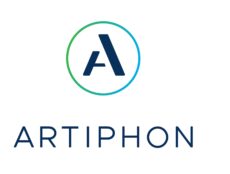
Articles
Editor’s Picks
K-12
Researchers Were Able to Improve 9th Graders’ GPAs with a 50-Minute Online Course on Growth Mindset
By Henry Kronk
August 12, 2019
Education researchers, by definition, tend to spend their time trying to figure out how to get students to learn more effectively, demonstrate better academic outcomes, and ultimately, lead a better life. In edtech, that research often focuses on different applications of technology like AI, blockchain, social media, VR, and more. But a study published this month in Nature sought to modify a different learning agent: learners’ mindsets. Researchers from over a dozen different institutions who collaborate on the National Study of Learning Mindsets published “A national experiment reveals where a growth mindset improves achievement” on August 7th.
Fixed vs. Growth Mindsets
The benefits of a growth mindset, compared to a fixed mindset, are widely accepted in the field of educational psychology. The mindset involves believing that one has the ability to learn and improve one’s knowledge (and ‘grow’). It runs counter to the idea that intelligence is set and that some people have it while others don’t (that intelligence is ‘fixed’).
In their introduction, the authors write about the virtues of a growth mindset intervention—or the presentation and encouragement of its use. They say it can be especially effective around 9th grade, when some groups of learners typically fall behind and stay behind in their education.
The only problem with such an intervention is that, like many education solutions, it’s difficult to deliver at scale.
For this study, therefore, the researchers developed a short 50 minute online course describing fixed vs. growth mindsets and the benefits of the latter. They delivered the course to over 6,000 lower-achieving students at 76 schools around the U.S. A control group of the same size took an unrelated course lasting the same amount of time.
They then tracked the GPAs of students in their core classes (math, science, English, and social sciences) from before the intervention and again four weeks after. Using a blind Bayesian analysis, the researchers identified a .11 bump on average in the GPAs of the test group. The number of students who scored a D or an F decreased by 5%.
Researchers Saw the Biggest Changes in Low-Achieving but Highly Supportive Schools
Schools were also recognized by two main factors: academic achievement levels and peer norms. In explanation of this second factor, the authors write, “we examined whether students might be discouraged from acting on their enhanced growth mindset when they attend schools in which peer norms were unsupportive of challenge-seeking, whereas peer norms that support challenge-seeking might function to sustain the effects of the intervention over time. We measured peer norms by administering a behavioral challenge-seeking task (the ‘make-a-math-worksheet’ task) at the end of the second intervention session and aggregating the values of the control group to the school level.”
Schools with low achievement and more supportive peer norms saw the biggest increases in GPA from the growth mindset intervention. Low- to medium-achieving schools (grouped together) witnessed an average GPA increase of .14 if they were the third quartile of peer norms. Among those in the fourth quartile (the most supportive), they saw an increase of .18.
The increases, furthermore, were often larger in math and science. Among low and medium achieving schools with supportive norms, students improved their GPAs by .16 to .25 grade points. Under certain conditions, in other words, the 50 minute growth mindset intervention course improved students’ math and science GPAs by nearly half a grade.
This was significant to the researchers, because math and science scores tend to predict educational attainment. Educational attainment, furthermore, tends to predict many other things, such as health, income, average lifespan, and more.
From their findings, a logical next question would be how one might encourage an environment and set of peer norms that encourages mental challenge, like the ones where the growth mindset intervention had the greatest effect?
The authors write, “Perhaps students in unsupportive peer climates risked paying a social price for taking on intellectual challenges in front of peers who thought it undesirable to do so. Sustained change may therefore require both a high-quality seed (an adaptive belief system conveyed by a compelling intervention) and conductive soil in which that seed can grow (a context congruent with the proffered belief system).”
Read the full study here.
Featured Image: Suzanne D. Williams, Unsplash.









No Comments